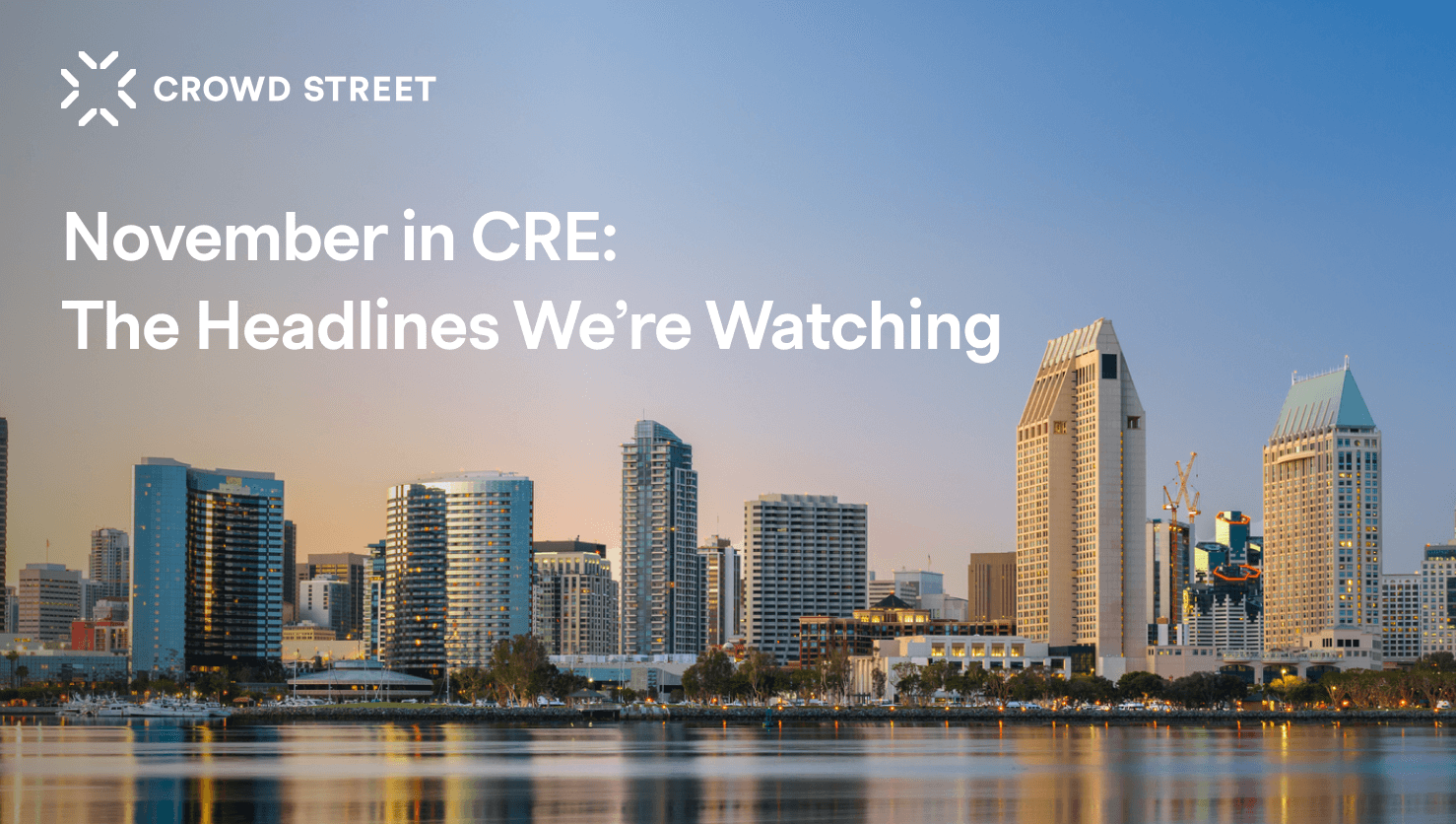Share
How Fed Rate Cuts Could Shape Private Credit Markets
Written by:
Crowd Street Editorial Team
Reviewed by:
Mary Collins White
The impact of rate cuts on most private market assets is fairly straightforward. Private equity and commercial real estate, for example, tend to benefit.^1^ Lower borrowing costs have historically driven deal activity and lifted valuations in those sectors.^2^
Private credit is more complicated. Cheaper debt can ease borrower stress, lower default risk, and support new deal flow. But it can also reduce income on floating-rate loans and shrink the yield premium over public credit.^3^
Why Is Private Credit So Rate-Sensitive?
Direct lending — the largest segment of the private credit market^4^— refers to privately negotiated loans between borrowers and lenders. These loans are often packaged into private credit funds, which have become a popular way for investors to gain exposure to the asset class.
Most private credit loans are floating rate, which makes the asset highly sensitive to changes in the federal funds rate.^5^ What’s up for debate is how that sensitivity is interpreted. Rate changes may be seen as either a tailwind or a headwind for the asset class, depending on who you ask.
Let’s consider both perspectives in light of the Fed’s recent 25-basis-point cut, its second this year.^6^
How Can Rate Cuts Help Private Credit?
One way a rate cut can support private credit is by easing borrower stress — one of the asset class’s primary risks.^7^
In private credit, performance depends on timely interest and principal payments. If a borrower can’t meet its obligations, fund performance is at risk. Protections like first liens on assets and strong covenants can help limit losses, but borrower distress is rarely good news for lenders or their investors.
In a lower-rate environment, borrowers face reduced interest expenses and are generally better positioned to meet their obligations, which can help potentially stabilize the performance of existing loans.^8^
Another potential tailwind for private credit is stronger deal flow. Direct lending often finances mergers and acquisitions, which tend to accelerate in lower-rate environments.^9^ An uptick in M&A may create more opportunities for lenders to deploy capital and negotiate loans.^7^
How Can Rate Cuts Hurt Private Credit?
As discussed, private credit loans are overwhelmingly floating rate.^10^ That means the income they generate through interest payments generally rises when the Fed hikes and falls when it cuts. Since coupons are usually tied to a benchmark like SOFR, changes in the policy rate flow directly through to what lenders earn.^11^
This also affects the yield premium, a term you hear often in private credit. It refers to the premium investors expect over public credit markets.^12^
During a hiking cycle, private credit’s floating-rate structure can widen that premium; while in a cutting cycle, the premium narrows as income declines.^13^
This is one of the factors that drove private credit’s substantial growth during the post-pandemic period of high interest rates. And, conversely, it’s a factor that could leave some investors nervous about the asset class as we enter an easing cycle.^14^
Opportunities and Risks in a New Cycle
In recent years, private credit returns have averaged 8–10 percent, outpacing public alternatives like the high-yield bond market. But past performance is no guarantee of future results, and cracks in the macroeconomic backdrop could weigh on this highly rate-sensitive asset.^15^
As investors assess opportunities, they should be careful not to see rate changes as a straightforward signal of growth or slowdown in private credit. The new rate-cutting cycle brings both opportunities and risks for this fast-growing corner of the global economy.




